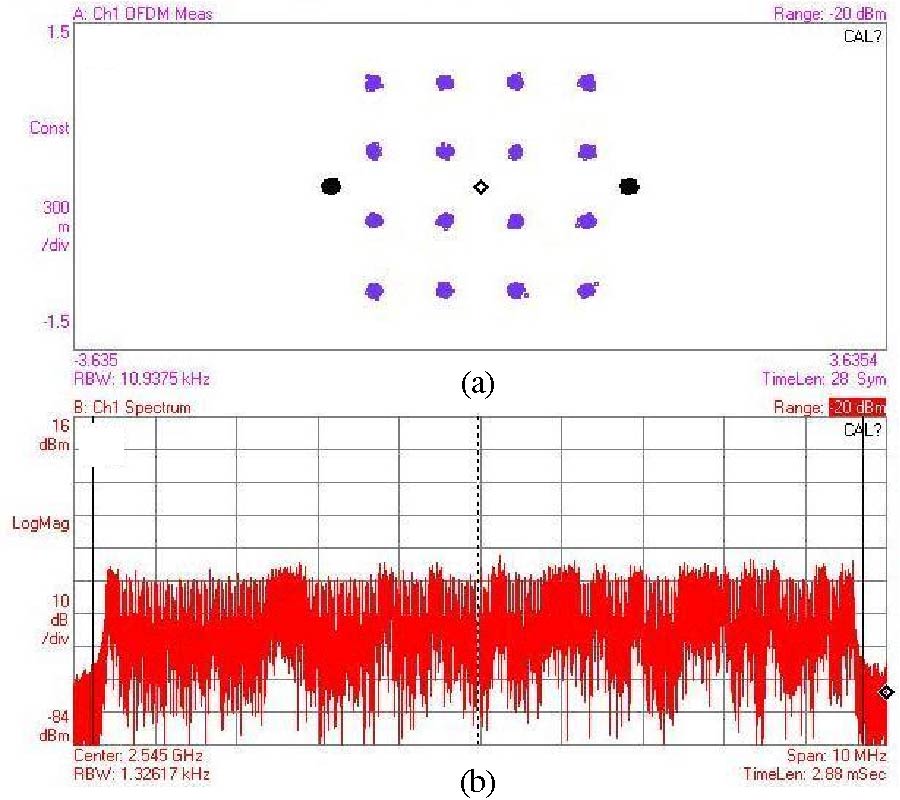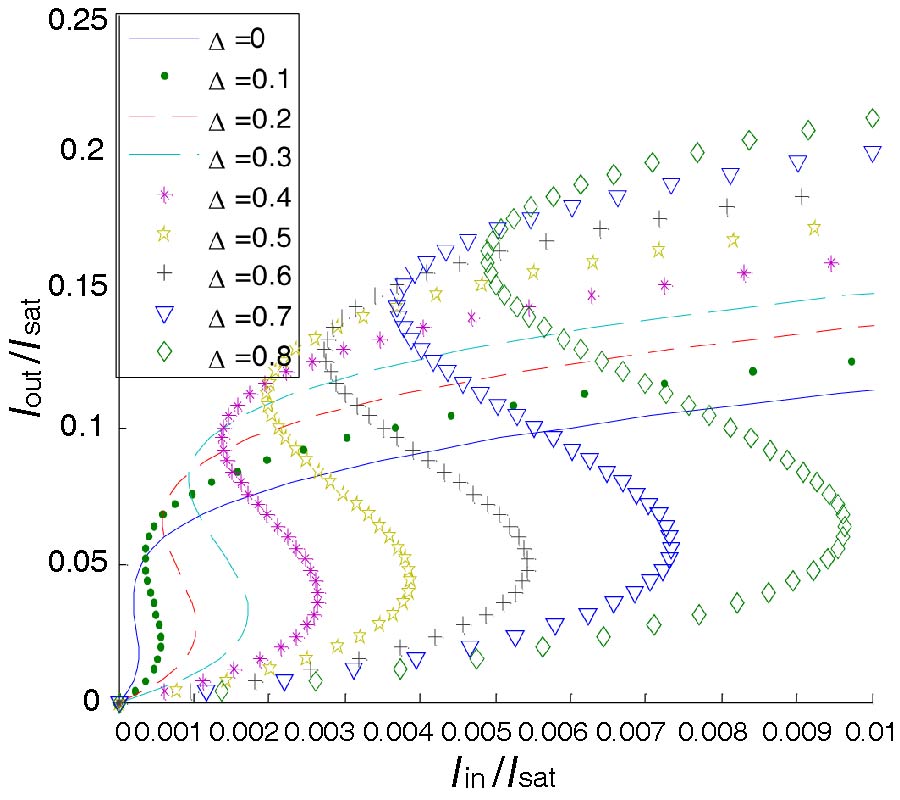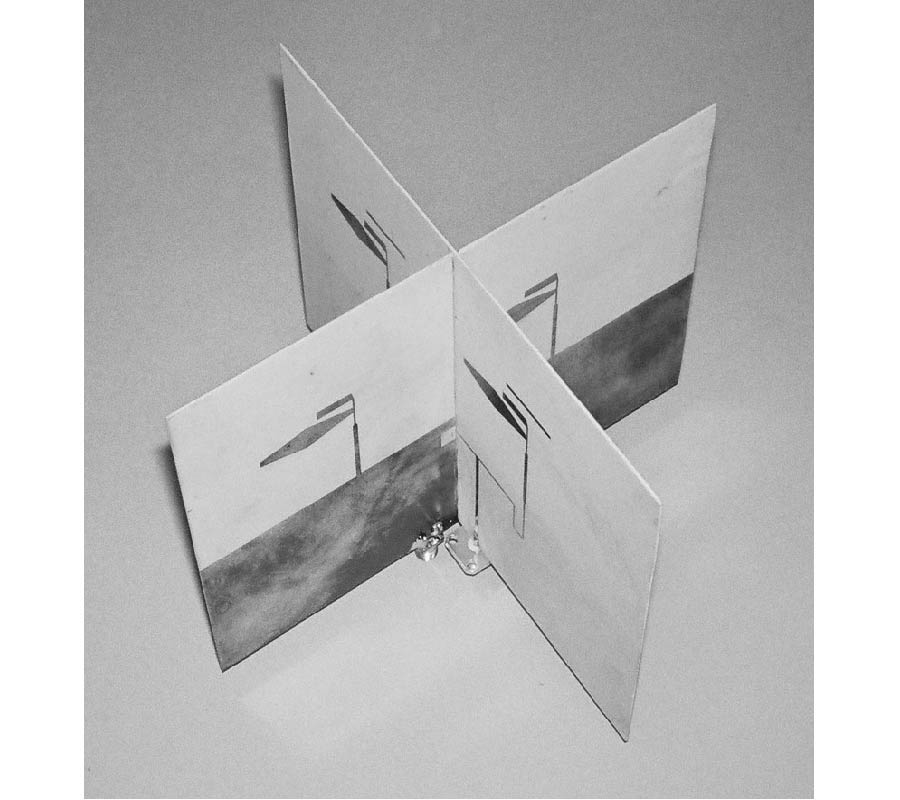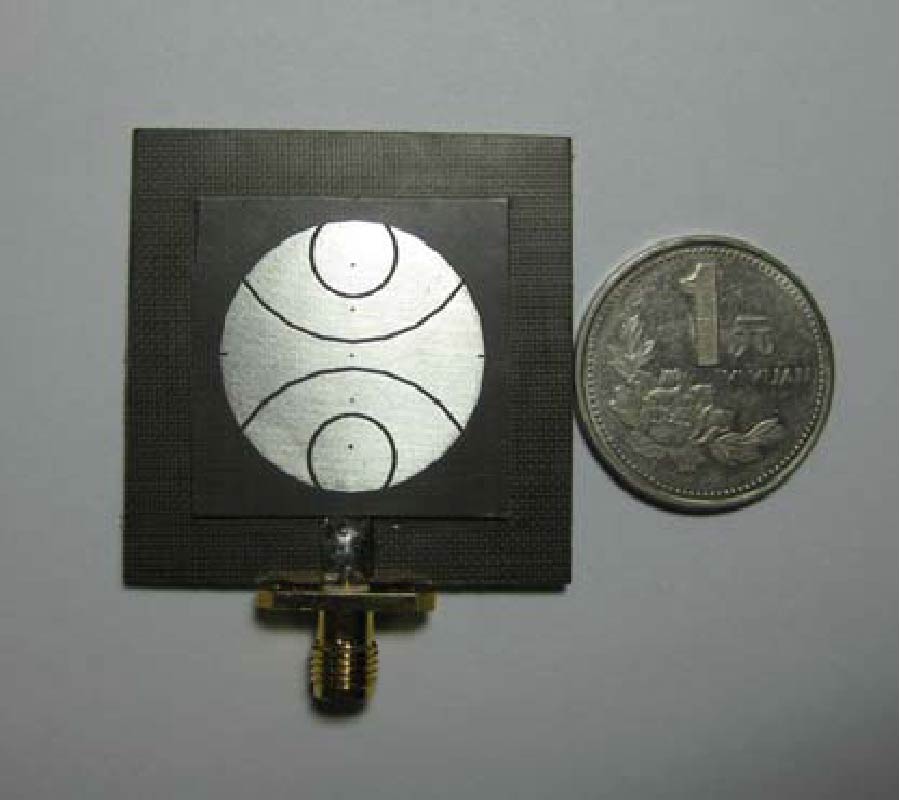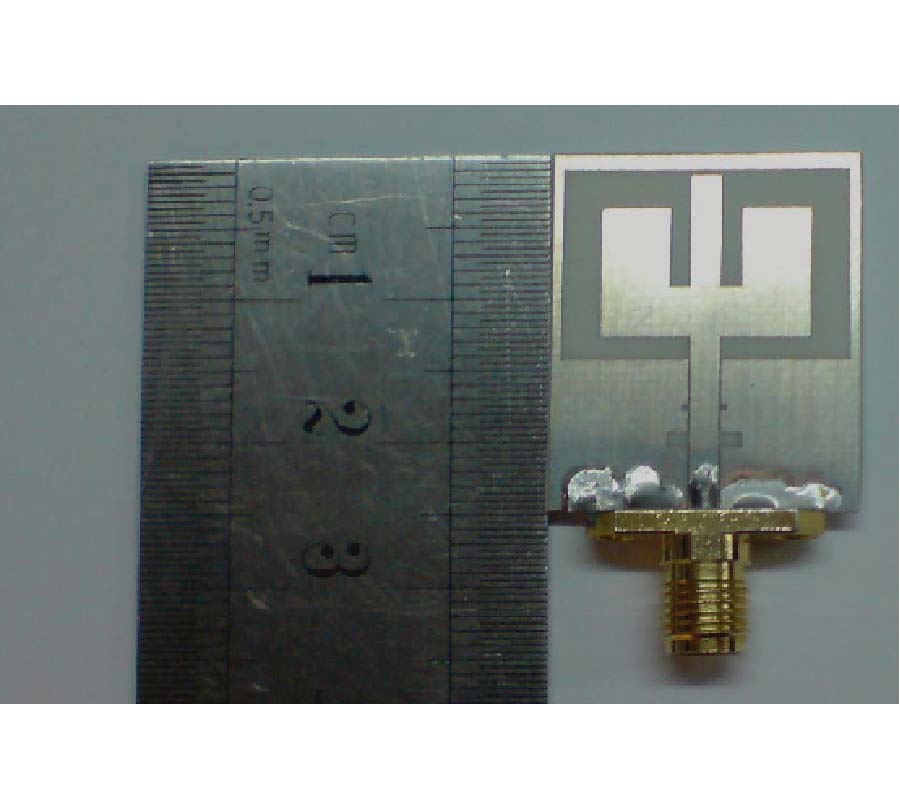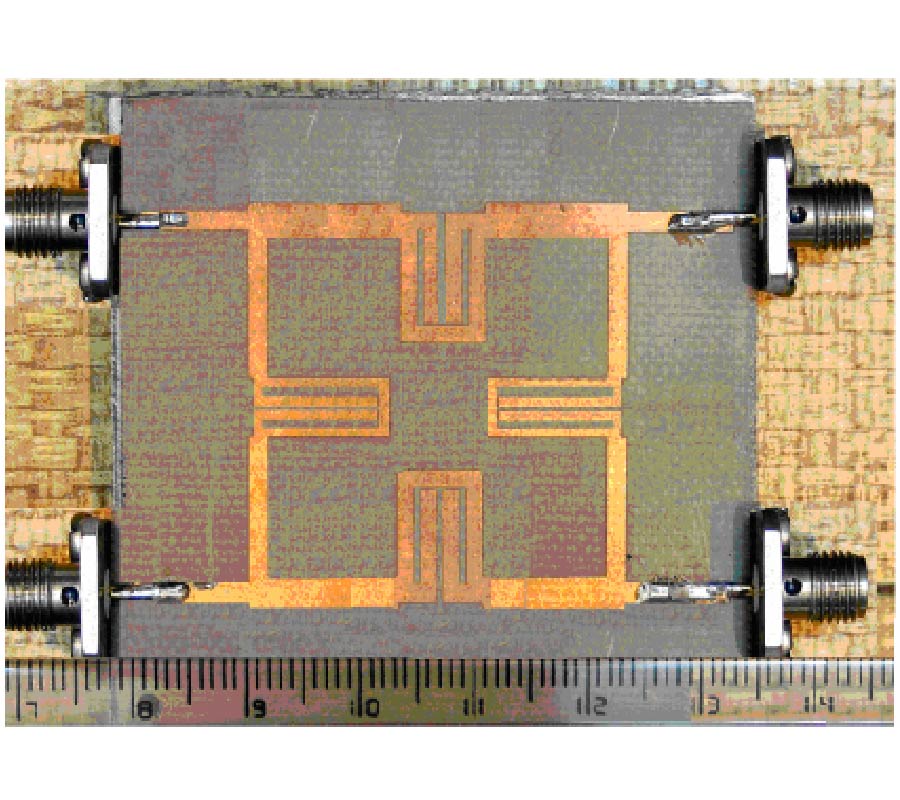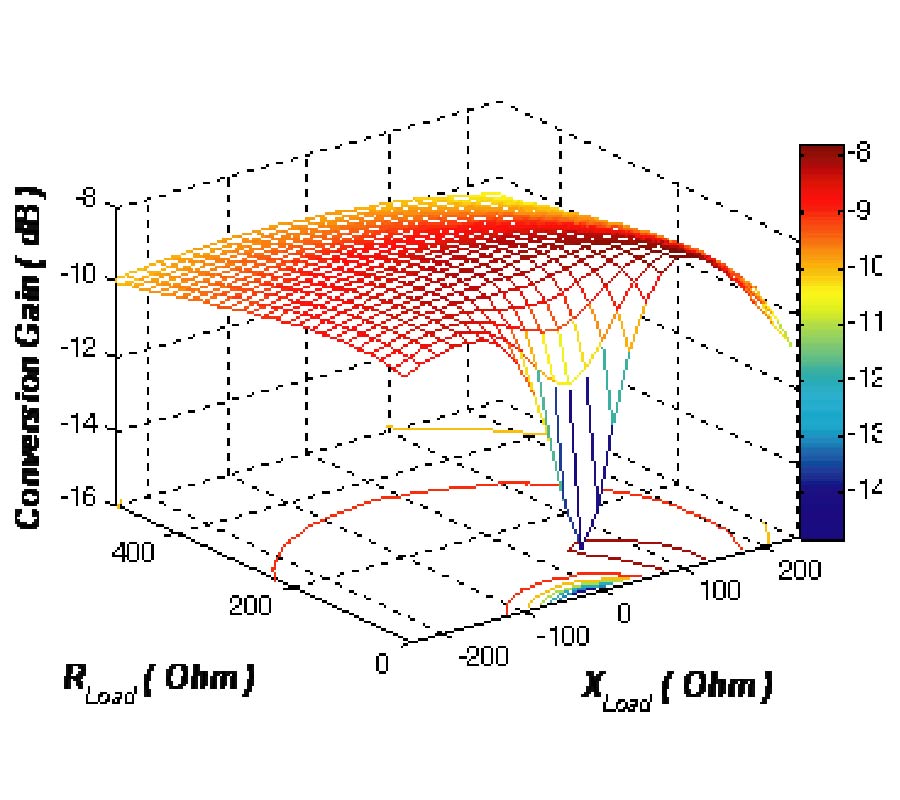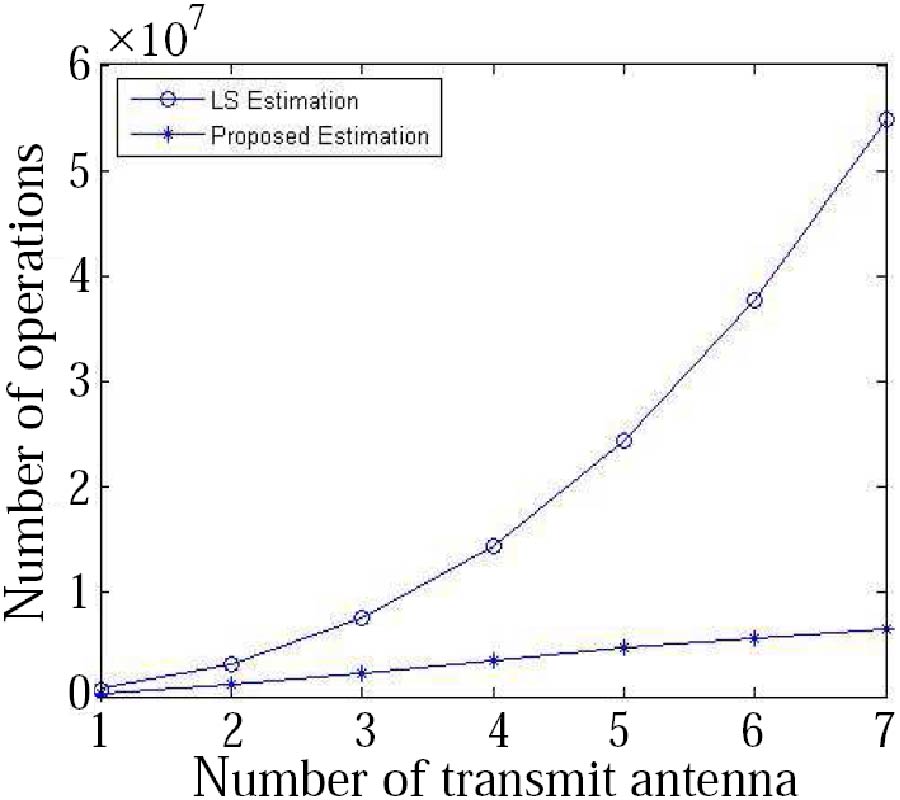A New Dual-Band High Power Ferrite Circulator
Hadi Razavipour,
Reza Safian,
Gholamreza Askari,
Faezeh Fesharaki and
Hamid Mirmohammad Sadeghi
The design, simulation and performance enhancement of a new structure for X-band high-power, low-loss, low-bias, triangular-ferrite waveguide circulator are presented. Dual circulation property is obtained by triangular shape of ferrite post. The effects of circulator's structure parameters, such as ferrite parameters and magnetic DC bias, on isolation, insertion loss and return loss of circulator are discussed. The HFSS software is used for simulating the circulators. Final dual band designs with 20 dB return loss, 20 dB isolation and 0:1 dB insertion loss in dual frequency in X-band (8:2 GHz and 10:4 GHz) with only a magnetic bias of 10 Oe are obtained.



